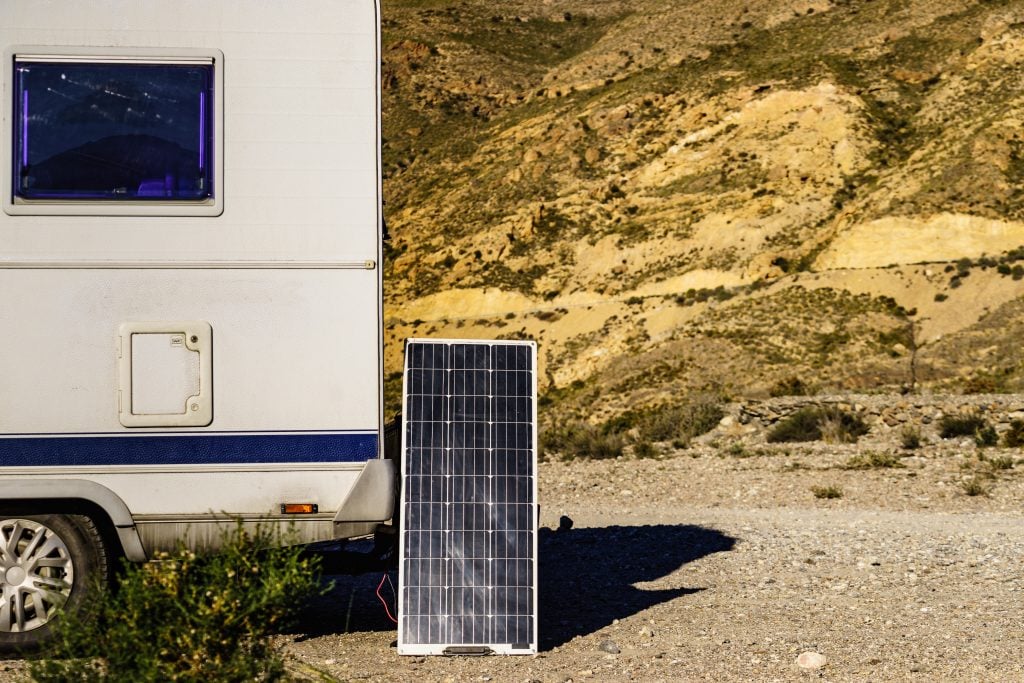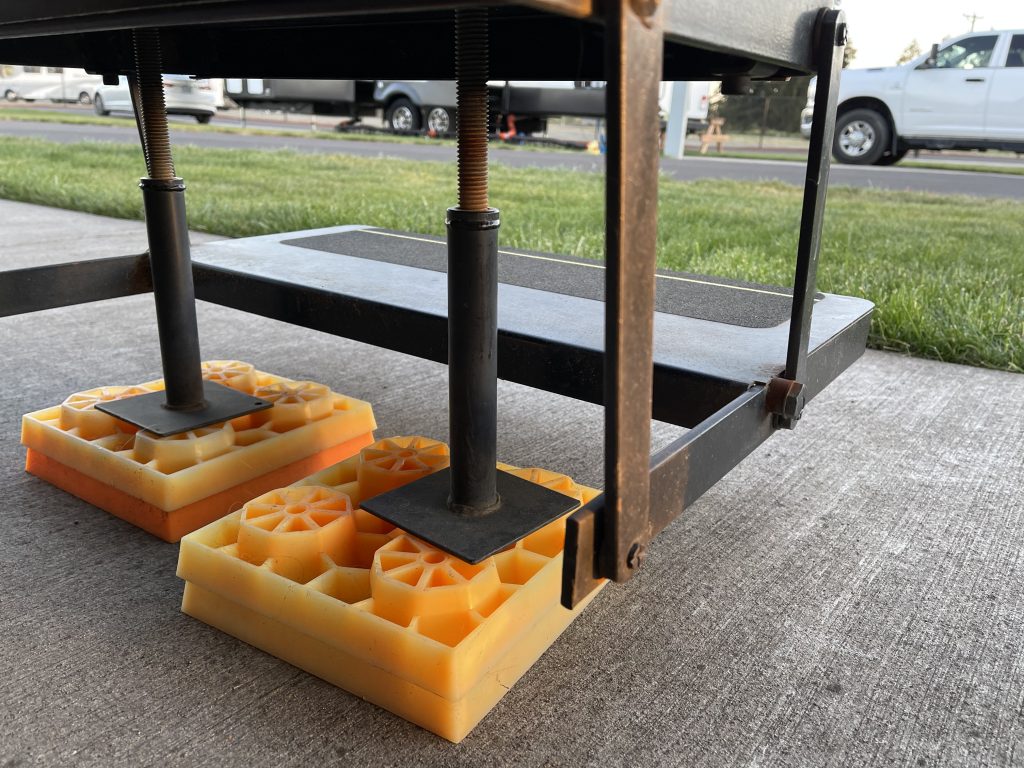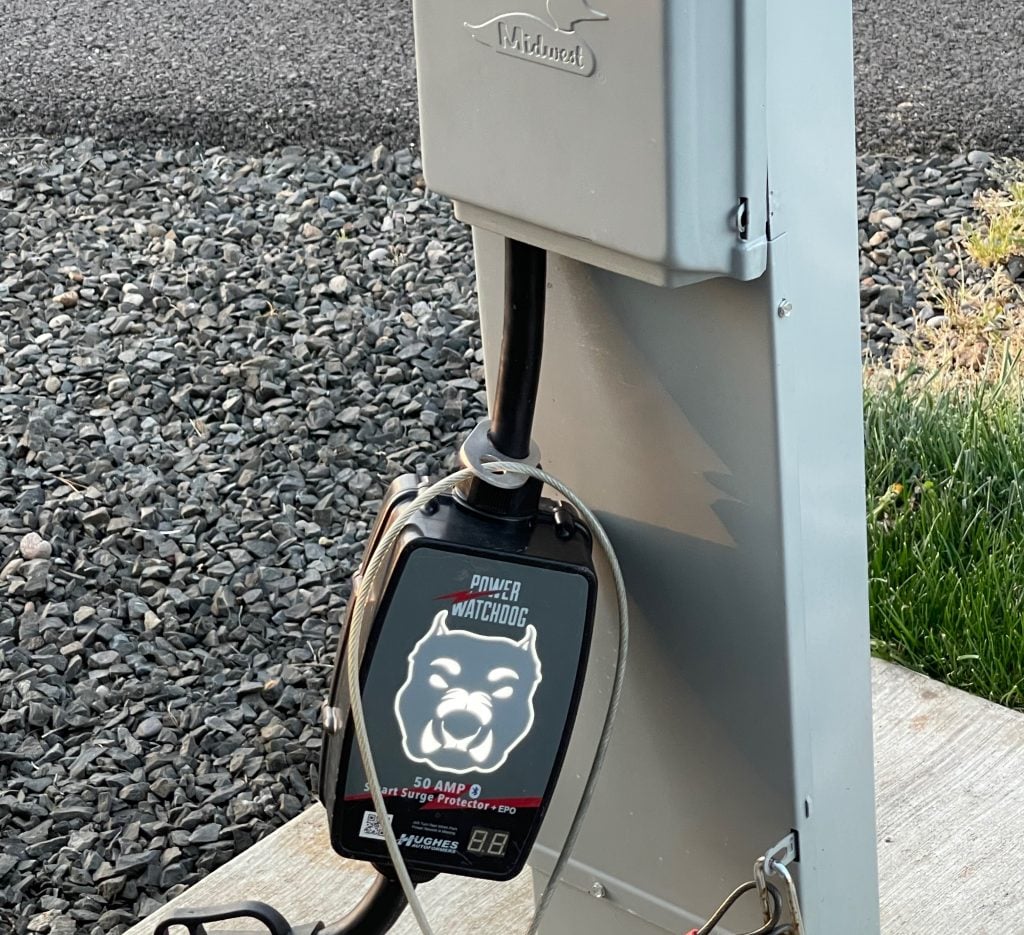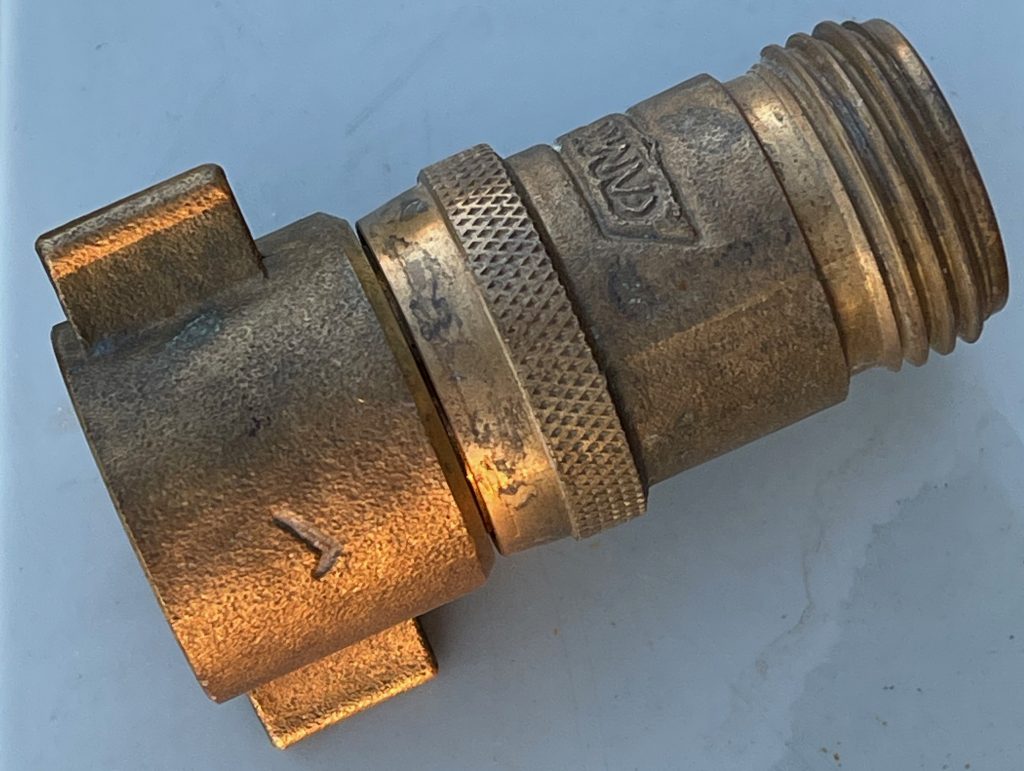
Enhance your RVing experience with affordable RV parts and accessories.
These 10 must-have aftermarket RV parts and accessories can save you some aggravation in your travels. Or, they can simply enhance the overall enjoyment of your camping experience.
Some of these RV parts and accessories are necessary to fix things that often malfunction at the most inconvenient times. Other items will make your RV function better. Some will help you prolong the life of your RV’s systems.
1. RV solar panels and Battery Management Systems (BMS)
The first item on this list is certainly a must-have if you hope to do any serious boondocking. Solar panels are now a common enhancement on RVs. You need power to operate the various systems in your RV and if you’re not intending to use shore power in a campground or RV park, then you’ll need to get that power from somewhere. Of course, you can run a generator but that requires fuel, it can be noisy, and in some places, generators are not allowed because of noise or fire restrictions.
Power generated from solar panels is the perfect alternative power source. If you’re handy, you can install them yourself or buy portable panels that are not permanently mounted to the roof of your RV. The advantage of portable solar panels is that you can move them to the most advantageous location to maximize power generation.
But it’s not enough to just buy solar panels. The power they create must be captured and stored in batteries which is far beyond the scope of this article, but you can learn more about solar panel installation, batteries, and Battery Management Systems (BMS) on Do It Yourself RV.
2. Camco Step Braces
These handy adjustable braces are only going to be relevant to Class A and C RVs and some travel trailers. Most fifth wheels, truck campers, and van conversions do not have the type of steps that these braces will protect, but for all the folks who do have automatic steps on their RV, these braces can save you the cost of replacing the steps down the road. I did have to replace our steps and our two-step version cost over $1000 to replace plus the time to schedule and go to the appointment.
The braces are portable, easy to use, and only cost about $20. You can purchase a pair of braces on Amazon and when they are installed under your steps, the braces handle all the weight of people going in and out of the RV without putting any unnecessary strain on the step mechanism. It prevents sagging and wear and makes the steps and the RV more stable.

Step braces will make your stairs and coach more stable and prolong the life of your stairs. Photo by P. Dent
3. Vent covers
These handy aftermarket products allow you to have your roof vents open on rainy days and to leave the vents open while traveling without concern that the wind will rip the vent’s plastic covers off. We have camped next to people who were on their roof in a heavy windstorm trying to cover their vent with plastic because they had left the vent open, and the wind literally ripped the top off of the vent. A vent cover would have prevented that damage.
Camco and MaxxAir both make these handy protective covering. They cost around $55 and are easy to install yourself. On rainy muggy days, you’ll really appreciate being able to open your roof vents.
4. Surge Protector
This is an aftermarket accessory (not a part). But it’s vital to preventing serious damage to your RV’s electrical system. The surge protector is plugged into shore power. Then, your electrical cord plugs into the surge protector.
There are many different styles and price points for these devices. You can get them in either 30-amp or 50-amp. If the maximum power in your rig is 30-amp, then the 30-amp surge protector will meet your needs. But if your RV is wired for 50-amp shore power, you’ll need the bigger surge protector. This protects your rig with either 30 or 50-amp power.
We have a built-in surge protector in our RV. But just to be safe I also added a portable protector. And because it cost nearly $300, I also have a cable and lock attached to the protector. This way it doesn’t go missing in the night.

A few hundred dollars spent on a surge protector could prevent extensive damage to your RV’s electrical system. Photo by P. Dent
5. Water filter
There are many types of water filters and water filtration systems for RVs. At their most basic level, they extract harmful chemicals and particles from your water supply. Some of these systems also come with water softeners to keep system damaging corrosive metals out of your RV.
Some water filters only filter the water in your kitchen sink, other systems filter all the water coming into your RV. Check out iRV2 forums or read this RV LIFE article to learn more and determine what is the best system for your travel adventures.
6. Pressure regulator
The water pressure in RV parks is all over the map. Some parks have very high water pressure, and some parks barely deliver a trickle of water inside your rig. The trickle is annoying, but the real danger is with too much pressure. Almost all the plumbing throughout your RV is plastic tubing and too much pressure can overwhelm the tubing or the connection points.
To control this problem, you can install a water pressure regulator at the hose bib then attach your water hose to the pressure regulator. The simplest version of these devices only cost about $10.
You can get more elaborate pressure regulators that have a gauge on them but it’s really not necessary. As long as you can keep the pressure from spiking up to a dangerous tube popping level, you are protecting your RV. But the advantage of the more expensive regulators with the gauge is that you can adjust the pressure to your liking and these regulators only cost about $30.

This is a very simple water pressure regulator. It restricts how much water can flow into your RV. Other regulators are adjustable and have a visible pressure gauge. Photo by P. Dent
7. Spare windshield wipers
As an RV accessory, this is only relevant to Class A, B, and C RVs because travel trailers and 5th wheels do not have wipers, but the general idea is applicable to the towing vehicles of these types of RVs as well.
Wipers often seem to be just fine until suddenly they’re not. This has happened to us more than once and having extra wipers in a basement has saved the day. Of course, you don’t realize that your wiper blades are shot until it’s pouring down rain and the rubber blades suddenly start to tear away from the attachment or they just stop clearing the water from your windshield.
Of course, fixing the problem right then in the rain is a nuisance, but a necessity. A better strategy is to check your wipers periodically and replace them on a regular basis. Then you won’t be standing on the side of the road in a torrential rainstorm doing something that should have been routine maintenance.
Once you replace the wipers, make a note to buy a spare set to have on hand. Another accessory in this category are windshield wiper covers. These covers slide over your wipers when you’re parked and they protect the rubber from damaging UV rays. These covers are not very expensive but they will prolong the life of your windshield wipers.
The last time we replaced the wipers on our Class A motorhome, they cost nearly $100. That adds up. If you can double the life of the wipers with covers, it makes sense to put them on your must-have RV parts and accessories list.
8. Replacement lighting parts
Every RV has some form of interior lighting and having replacement lights for your rig will make the annoying burned out bulbs or blinking lights that are about to go out less annoying.
Our old Class A RV had overhead light fixtures with replaceable bulbs. Our new RV has low profile LED lights and the entire light housing has to be replaced, not just a bulb.
Either way, it’s easier to carry a few of these replacement lights or bulbs with us rather than scramble to find them while we’re camped in some remote location miles away from a dealer or RV parts store.
9. Replacement latches & window shade string kits
This must-have RV part is like number 8, but it’s for the cupboard and drawer latches that are in your RV. These latches fail from time to time and if you don’t have replacement latches you may have a sliding closet mirror slamming back and forth while you’re driving, or cupboard doors swinging open.
The parts are easy to get when you’re at the dealership but not easy to get if you’re boondocking or in a remote location. Carrying extra latches in your RV will save you a lot of aggravation.
Additionally, if you have window shades that are the accordion style with strings in them, I would also advise that you carry a string replacement kit or two for your window shades. If the strings wear out in one shade, then others will likely follow.
The kits are inexpensive, and the repair is not that hard if you’re at all handy and you can follow the instructions. I replaced the strings in many of the shades in our older RV and having the string replacement kit with us when the shade string broke meant that we were able to get that repair done immediately.
10. Fuses
This probably does not need to be said, but you should always have extra fuses in your RV. There are many different types of fuses in an RV and you can buy a kit to cover the most common types. You might still need to go to the auto parts store for an off-beat fuse, but having the most common amps and styles of fuses for most circuits will save you headaches in the future.
Summary: Must-Have Aftermarket RV Parts And Accessories
This list of must-have RV parts and accessories could be much longer and might include everything from outdoor griddles to mats, chairs, propane fire pits, and all kinds of DIY modifications that make your rig and your camping experience more rewarding. These 10 items, on the other hand, are the parts and accessories I have personally learned through experience that I needed for my RV travels.
A retractable marshmallow roasting stick might be a fun accessory to have on board, but a 20-amp fuse to keep your refrigerator working falls into the must-have category.
You, Me & The RV shares some of their favorite RV accessories in the video below:
If you’re new to RVing, then take some time and read the iRV2.com forums to better understand what types of issues you might encounter in your travels, so you can make your own personal list of must-have parts and accessories, then you can stock up the next time you’re at a service center.

Great info, I would add bungee cords, duct tape, tire pressure gauge, lots more ..
The link on surge protectors took me an Amazon listing for Camco’s PowerDefender. I had one of these. I was never submerged by filled with rain water while hanging on my MH. It shorted out. I opened it up to find about 1/2 cup of water inside it. I messaged Camco to find where to send it for service. They told me it was not repairable. At the price of these things that answer is unacceptable. While I’m a fan of many Camco products, I will never buy or recommend any of their electrical products – in fact I will spread the word about how well they stand behind what they sell.
Great list! Thank you.
TPMS- tire pressure monitor system and check the dates on your rv tires as they will age out before they wear out the tread. I have seen many a vacation ruined by having one or more tires shred on the highway.
What about water hoses, sewer hoses and lug wrenches or weight distribution hitches that are never supplied with the new RV for which you have already paid several 1000’s of dollars? If things like surge protectors and water pressure regulators are necessary, then why not include them as well? Yeah there is a mark up, but it’s only a few hundred and you will end up buying them anyway. You think you are getting a deal on your rig, but my neighbor still had to spend $3000 in gear to get his Fifth Wheel on the road. The salespeople never really mention that.
I would mention some EMERGENCY FOOD. Not MRE’s, but just a shoe box or some thing with some easy to fix canned and dry goods. We had these and added what we could in a tote when lockdown began, qnd we were 2500 miles from home in the desert. Pasta & sauce, soups, that sort of thing. We could not find a lot of fresh food and the canned & pasta sort went fast. Ditto an emergency stash of TP, we were fortunate to have found a WM with some during Senior Hours, so each of us got a pack and checked out seperatly. Don’t judge, heading across most of the country planning on making as few shopping stops as possible and having a person with tricky digestion this was a NEED. We also stashed a large pack of bottled water, tissues, and whatever cleaner we could find. I don’t use the side of our bed to get in and out so most of this stuff was stashed there, with a 100 or so lbs of legal petrified wood!
We plan on keeping up with this planning just in case.
Duct tape, PEX fittings, washer liquid, ice scraper– yep, needed it in Louisiana in JANUARY. Scraped with a cheap WM spatula– nope!!
What kind of mileage are you getting in your Lazy Daze?We have one too.
My husband and I have been wanting to go RV camping since we have been in lockdown for almost a year now. Thanks for giving these tips on what accessories to buy such as replacement latches since they constantly break, so it’s good to have spares. I also wonder where I could buy an awning that we could also install.
The water restrictor shown on #6 does little for your RV. It does reduce the pressure when water is flowing in your RV. Yet if you are using water, the pressure regulation is not that important for the open tap serves the purpose of not allowing high pressure to build. When the water taps in your RV, (facuets etc.) are all closed the water restrictor does nothing to reduce the pressure in the water system. This is when the damage will happen through leaks and broken connections or fittings.
If the Parked RV movement bothers you, then you need a brace system that uses either 3 or 6 braces that go from the frame to the ground. The Steadyfast system mounts permanently on the trailer and will eliminate about 90% of the annoying parked trailer movement.